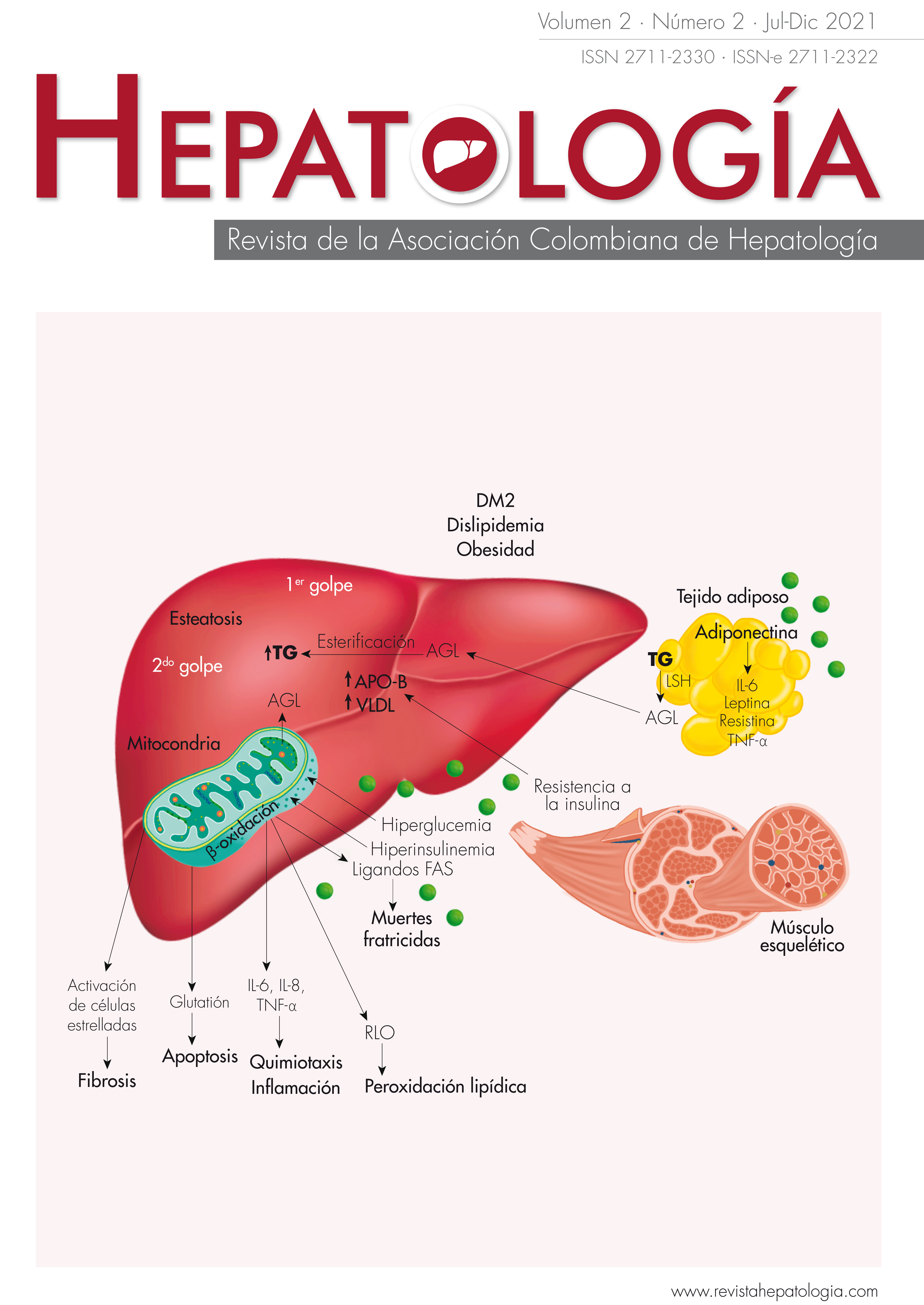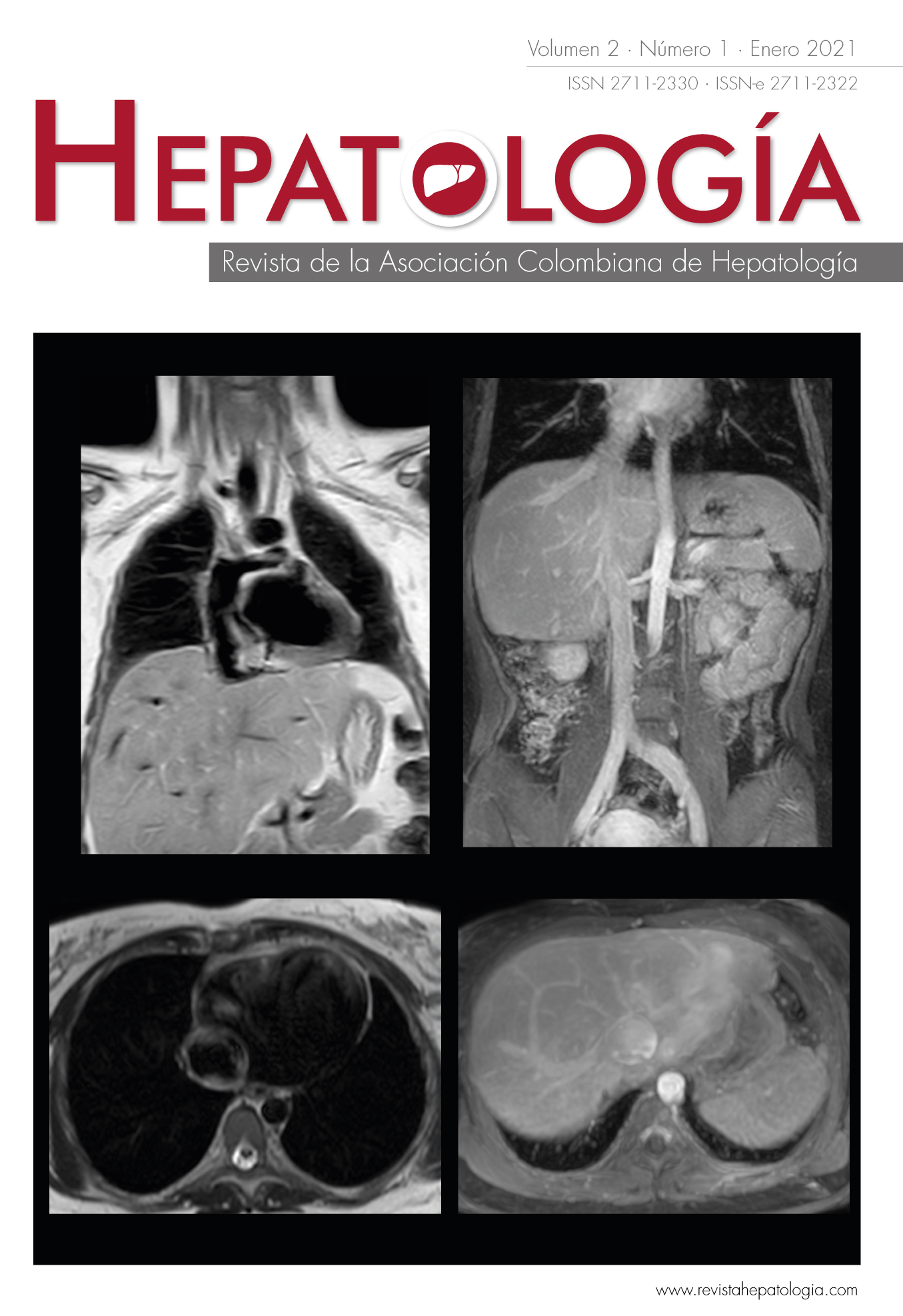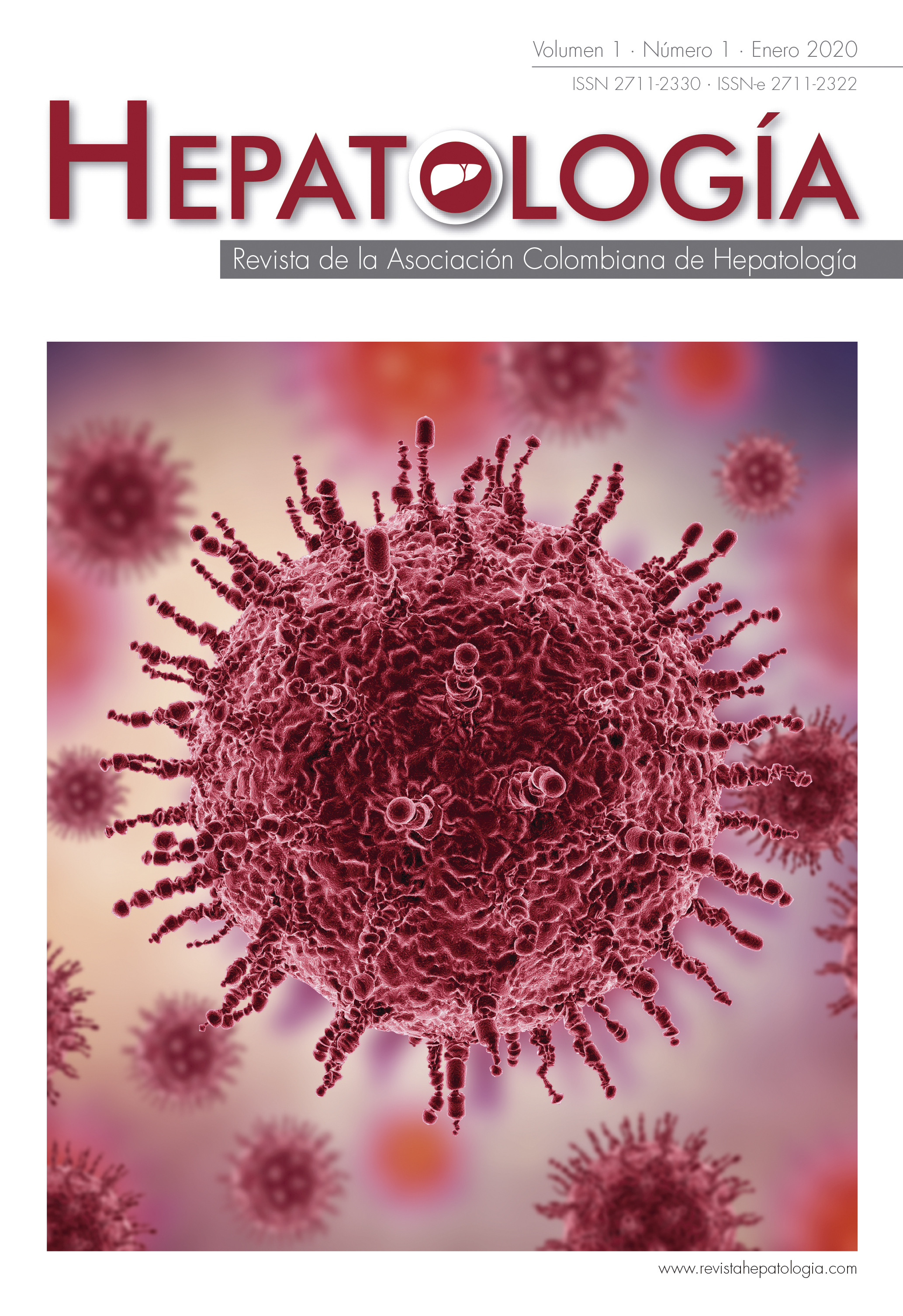Archives
-

January-April
Vol. 6 No. 1 (2025)Hepatic iron overload occurs when the transferrin-binding capacity for this metal is exceeded, causing non-transferrin-bound iron (NTBI) to circulate in the blood and deposit in the liver, triggering ferroptosis due to the generation of free radicals and lipid peroxidation.
-

September-December
Vol. 5 No. 3 (2024)Portal vein thrombosis (PVT) is defined as a partial or complete obstruction of the lumen of the portal vein or its tributaries due to the formation of blood clots.
-

May-August
Vol. 5 No. 2 (2024)The emergence of direct-acting antivirals (DAAs) has provided a broad range of treatment options for chronic hepatitis C virus (HCV) infection.
-

January-April
Vol. 5 No. 1 (2024)Transjugular intrahepatic portosystemic intrahepatic shunt (TIPS) comprises joining one of the suprahepatic veins and a portal branch, in order to shunt a percentage of blood flow and therefore decompress the portal venous system.
-
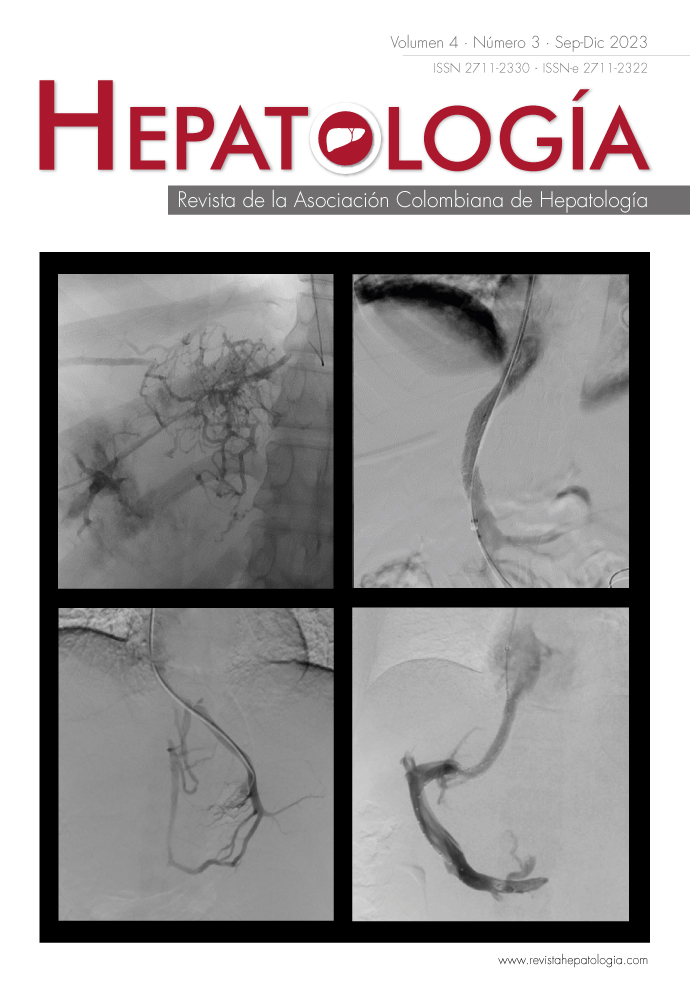
September-October
Vol. 4 No. 3 (2023)Two patients with Budd-Chiari syndrome before and after treatment with TIPS. -
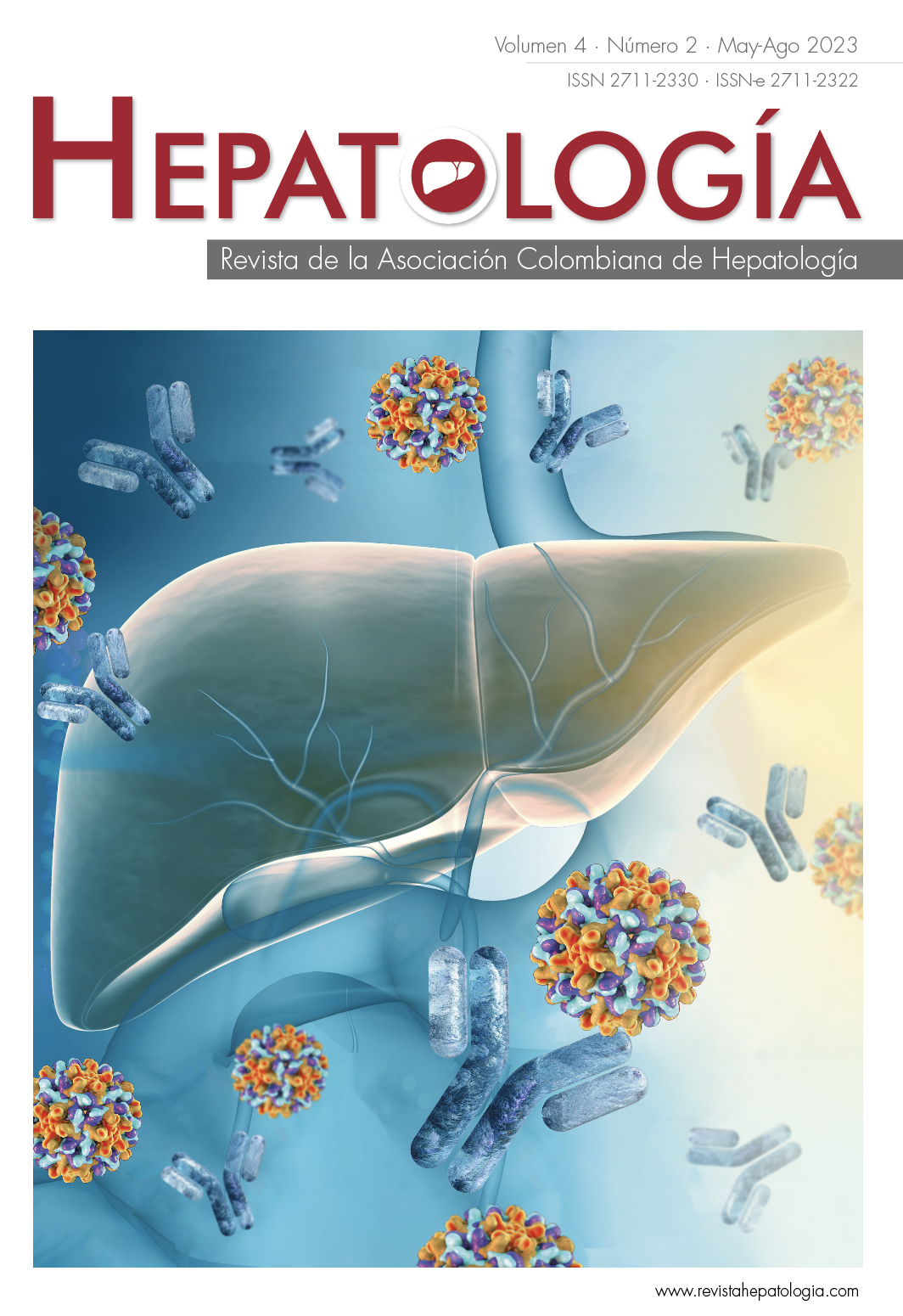
May-August
Vol. 4 No. 2 (2023)Globally, 300 million people are infected with the hepatitis B virus (HBV). With recent advances in molecular analysis, new HBV biomarkers have been identified.
-

January-April
Vol. 4 No. 1 (2023)Disruption of the symbiosis that exists between the human body and its microbiome can result in dysbiosis, which can be associated with gastrointestinal and hepatobiliary diseases.
-

July-December
Vol. 3 No. 2 (2022)Despite considering COVID-19 as a primarily respiratory disease, the SARS-CoV-2 virus is also an important cause of hepatobiliary diseases.
-

January-June
Vol. 3 No. 1 (2022)Liver diseases are a major cause of morbidity and mortality worldwide. -
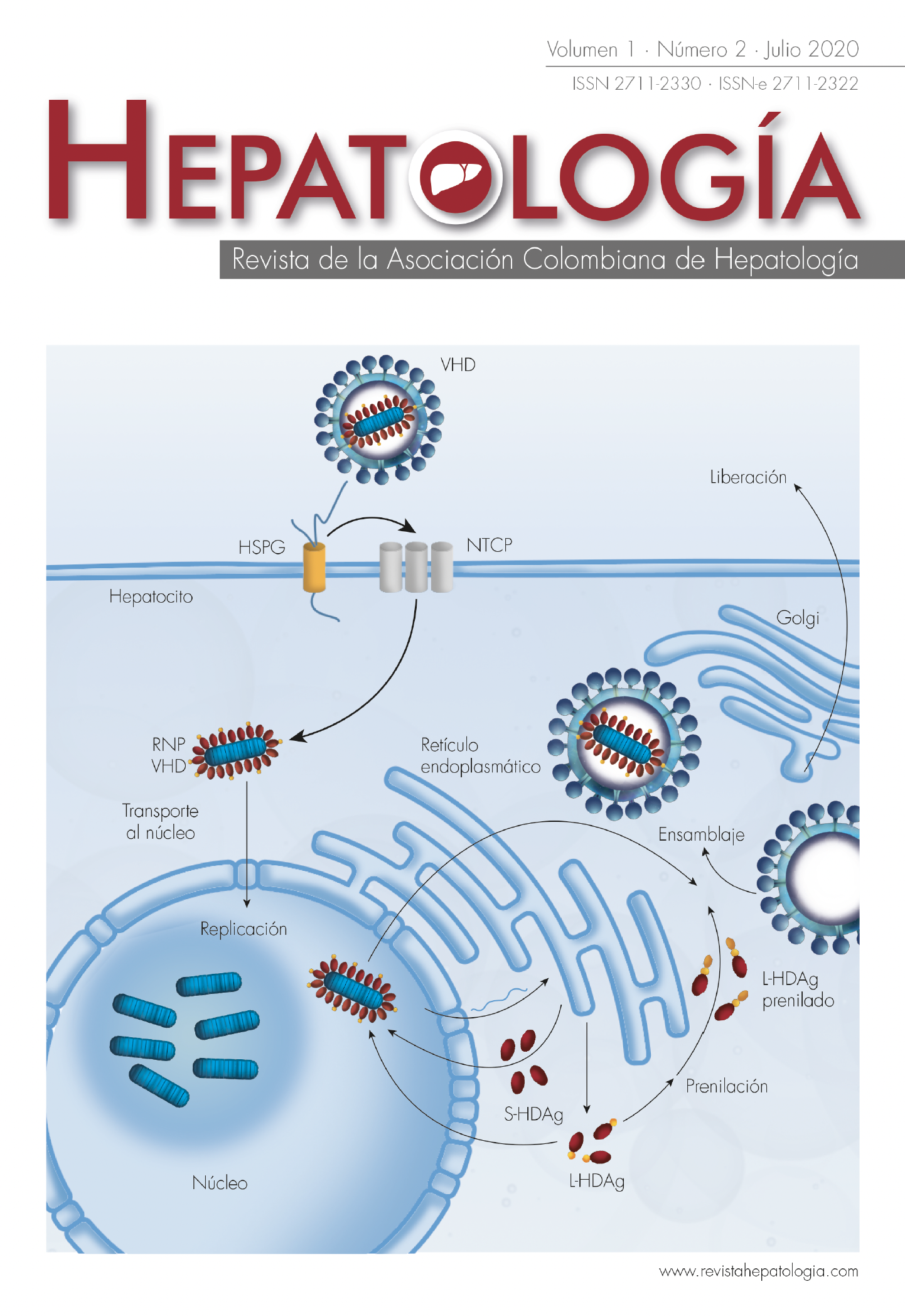
July-December
Vol. 1 No. 2 (2020)Graphic representation of the replicative cycle of the hepatitis delta virus (HDV).

